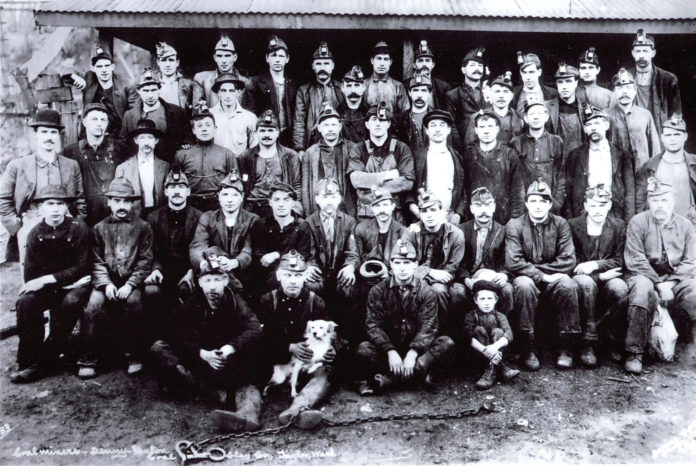From its beginnings Lester had been a railroad town, built to house rail crews that cut through 12-foot snow drifts, maintained tracks, serviced, scheduled and ran the trains which climbed over Stampede Pass on a daily basis.
In addition to a two-story hotel constructed to house rails workers, this cabin served as a bunkhouse for the track and engine crews of the Northern Pacific Railway. The bunkhouses served as a home away from home for crews, though at its peak in the 1920s, Lester boasted a population of over 1,000. Easton, a railroad town on the east side of Stampede Pass, was another terminal where crews found temporary housing. Here, four rail workers show off a puppy from the steps of their cabin.
Only the man on the left, Adolph W. Nordstrom, a Fireman stationed in Lester, has been identified. But sometimes even entire towns have to die. This increasingly became Lester’s destiny after the Howard Hanson Dam on the Green River was completed in 1962. The City of Tacoma, seeking to protect their water supply, began condemning large areas of the watershed, which eventually spelled Lester’s demise.
In the spring of 1985, current and past residents of the town gathered around a mock tombstone bearing the epitaph: “Here lies the town of Lester . . . killed May 22, 1985, by the pen of Gov. Booth Gardner – hired gun of the City of Tacoma.” However, the memory of Lester lives on, some of which was collected in a book by Ruth Trueblood Eckes titled “A Lester Scrapbook,” a collection of maps, pictures and remembrances created for a 2006 reunion of former residents.
This photo comes courtesy of JoAnne Matsumura, an Issaquah researcher, while background information about Lester’s housing come courtesy of Dave Sprau, a Warren, Oregon railway historian.








